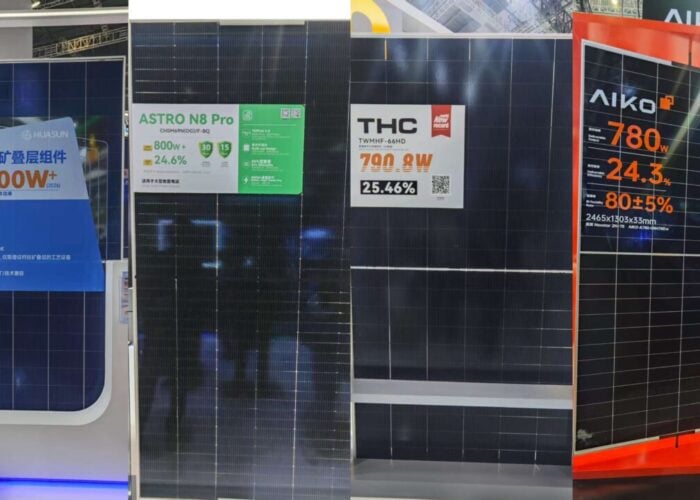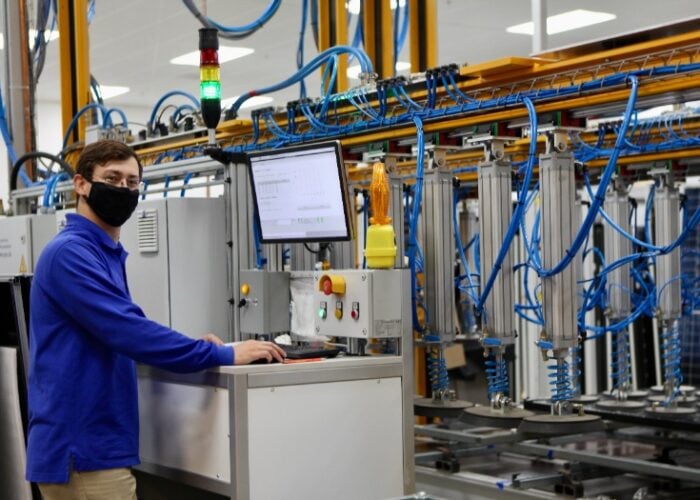
Research funded by the US Department of Energy (DOE) has found that the use of a hybrid polymer material in perovskite solar cells could limit the effects of weather-based degradation on the cells and help ensure high conversion efficiency over an extended period of time.
The research, published in the paper ‘Strong-bonding hole-transport layers reduce ultraviolet degradation of perovskite solar cells’ notes that the light-emitting diodes used in a number of laboratory testing environments are dissimilar from the “unfiltered sunlight of the outdoors”, which can have a more significant impact on the degradation of the solar cells.
Unlock unlimited access for 12 whole months of distinctive global analysis
Photovoltaics International is now included.
- Regular insight and analysis of the industry’s biggest developments
- In-depth interviews with the industry’s leading figures
- Unlimited digital access to the PV Tech Power journal catalogue
- Unlimited digital access to the Photovoltaics International journal catalogue
- Access to more than 1,000 technical papers
- Discounts on Solar Media’s portfolio of events, in-person and virtual
Or continue reading this article for free
The researchers found that environmental factors, such as temperature, solar irradiance and UV light intensity, can change outdoors more quickly than in a controlled laboratory environment and that changes in these conditions, in addition to changes in moisture in the environment and voltage applied to the cell, can have an impact on the efficacy of the cell. They found that “weak” chemical bonding between the perovskite layer, polymer HTM layer and transparent conducting oxide layer in the cell contributed the most significantly to this decline.
In response, the researchers developed a polymer to strengthen the bonding between these layers and minimise efficiency losses. The team tested a cell that included one such polymer, with a power conversion efficiency of 16%, and found that after 29 weeks of outdoor testing, the cell’s conversion efficiency remained above 16%.
“We believe this is the first published demonstration of outdoor performance showing perovskite mini modules with an area greater than 15cm2 that had a measured aperture efficiency above 16% after 29 weeks of outdoor testing,” said Laura Schelhas, chemistry researcher at the National Renewable Energy Laboratory (NREL) in the US, which led the research. This result was verified by the DOE’s Perovskite PV Accelerator for Commercializing Technologies (PACT) centre, of which Schelhas is the deputy director.
“Real-world demonstration is a critical step towards commercialisation, and we hope by PACT offering these capabilities researchers and companies can leverage this data toward improved reliability,” added Schelhas.
The NREL was joined in the study by researchers from the University of North Carolina at Chapel Hill; the Colorado School of Mines; the University of California, San Diego; and the University of Toledo, and the report can be read here.
Perovskites have long been a topic of interest for the solar sector, with most major module producers bidding to become the first to commercialise the technology despite ongoing issues with its stability in real-world conditions. The Intersolar Europe event held in Munich last month saw a number of perovskite-related announcements and launches, including a silicon-perovskite tandem solar cell with a power conversion efficiency of 30.1% announced by Chinese manufacturing giant and pioneer Oxford PV unveiling a tandem perovskite module for residential applications with a record-breaking 26.9% conversion efficiency.







